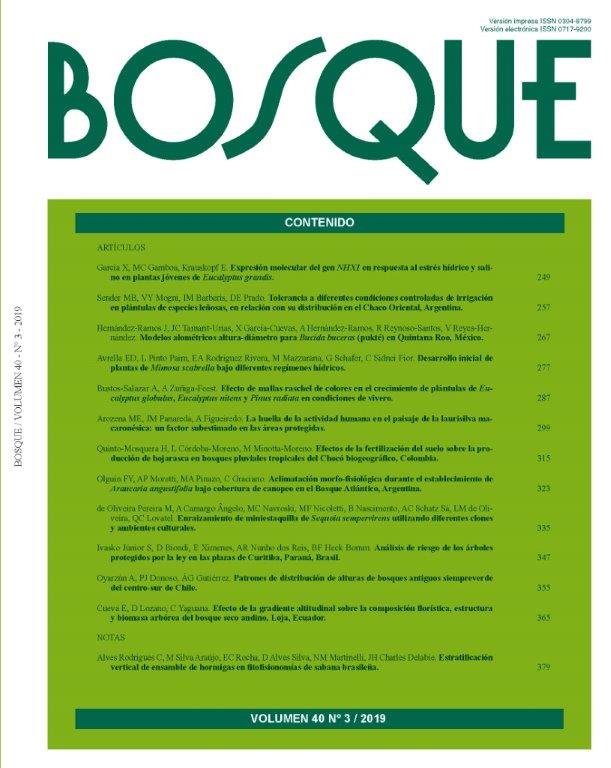Effect of the altitudinal gradient in the floristic composition, structure and arboreal biomass of the Andean dry forest, Loja, Ecuador
Main Article Content
Abstract
Dry forests are fragile ecosystems, developed in extreme climatic conditions that harbor a wealth of flora and fauna due to the influence of the Andes mountain range. This study aimed at analyzing the influence of altitude in floristic composition, structure and aboveground biomass in the Andean dry forest. Three L-shaped conglomerates were established in different altitudinal gradients from 1,750 to 2,320 m a.s.l in the Andean dry forest of Natural Reserve of Pisaca, Loja. Where, trees with DBH ≥ 10 cm were measured in the 0.36 ha plot and individuals with DBH ≥ 5 cm in nested plots of 0.40 ha. Ecological parameters were calculated, and biomass was estimated by allometric equations generated for dry tropical forests. We identified a total of 2,012 individuals, belonging to 39 species and 1 morphotype distributed in 35 genera and 23 families. The families with the highest diversity and species richness were Asteraceae, Fabaceae and Myrtaceae. The most abundant species were Myrcianthes sp., Lafoensia acuminata, Xylosma sp., Mauria heterophylla and Vachellia macracantha. Forest mass has a basal area of 29.48 m2, wood volume of 149.51 m3 and estimated biomass of 565.44 Mg ha-1. We concluded that in the Andean dry forest, when altitude increases richness, structure and biomass increase. However, in the case of diversity, there is no correlation between altitude and diversity. Therefore, altitude is a relevant topographic variable in biodiversity studies.

